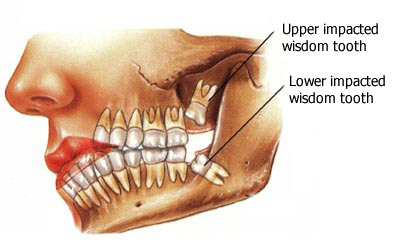
Helping Your Child Overcome Their Dental Phobia
Dental phobias are said to affect around ten percent of the population, with many children falling into this group. Very often, children hesitate to go to a dentist if they have had a bad experience previously. However, in some other dental phobias may stem from other more complex issues. Parents and dentists can work together to remove the common fear children have of dentists and dental treatment.
What Can Parents Do to Help?
A great deal of patience and compassion is needed when handling a child with dental phobia. Parents should talk to the child about his/her fear and try to understand the reason for the fear. Parents can help immensely by persuading their children to understand that the dentist is a friendly person who has their best interests in mind, and how only a dentist can help them maintain good oral hygiene and thereby overall health. It is important that parents are not themselves anxious or worried because this will be immediately picked up by the child. It is up to the parents to try and convince the child that dental treatment is of absolute importance and not that painful.
Friendly Conversation with the Dentist Prior to Treatment Can Help
The dental practice, the instruments, and the atmosphere – all these might create fear in the child, mainly a fear of the unknown. This can be alleviated by arranging a visit to the dentist just for the purpose of talking to your child. During such conversations, the dentist will come through as any other friendly person and the child will understand that there is nothing to worry about. However, inform your child that you are going to visit the dentist just to have a conversation and find out if he/she has any misgivings. Ask them to tell you what exactly they fear and try to remove that phobia. In short, your child has to be well prepared for the appointment.
The dentist himself can help remove the children’s fear by talking to them in a very friendly voice. The procedure could be explained to the child in a very simple manner. Once the child is familiar with the dentist and his ways, dental phobia will be considerably reduced.
What Can Be Done During the Actual Procedure
During the actual treatment, parents can create a calm and relaxing environment for the child by skillfully distracting them. Reading a story to them or talking to them about things that interest them can help in diverting their attention from any discomfort they might be feeling. Another practical way to reduce fear during a dental appointment is to ensure your child that you could ask the dentist to stop if at all he/she was feeling uncomfortable. For this, a code could be created between your child and yourself, and of course, you should inform the dentist about this.
Dentists can use distraction techniques to lessen the child’s phobia. These include showing a toy to the child or telling him/her a funny story. They can also tell the kids how easy the process is and how they will be getting a very beautiful smile. Gentle and compassionate dentists can contribute a lot to removing a child’s dental phobia.
It is important to help your children overcome their dental phobia at an early stage itself. Otherwise this fear will increase and the child will grow up into an adult who will shy away from dentists. This can have serious consequences on their oral health. Therefore make sure that you find a friendly dentist who is supportive and can help you in removing your child’s dental phobia.
by Mark Fields


 In The Sacramento Bee, an article was published discussing how having the “wrong bacteria” in our mouths could lead to tooth decay and gingivitis, and could even have detrimental effects on our hearts and kidneys.
In The Sacramento Bee, an article was published discussing how having the “wrong bacteria” in our mouths could lead to tooth decay and gingivitis, and could even have detrimental effects on our hearts and kidneys.




